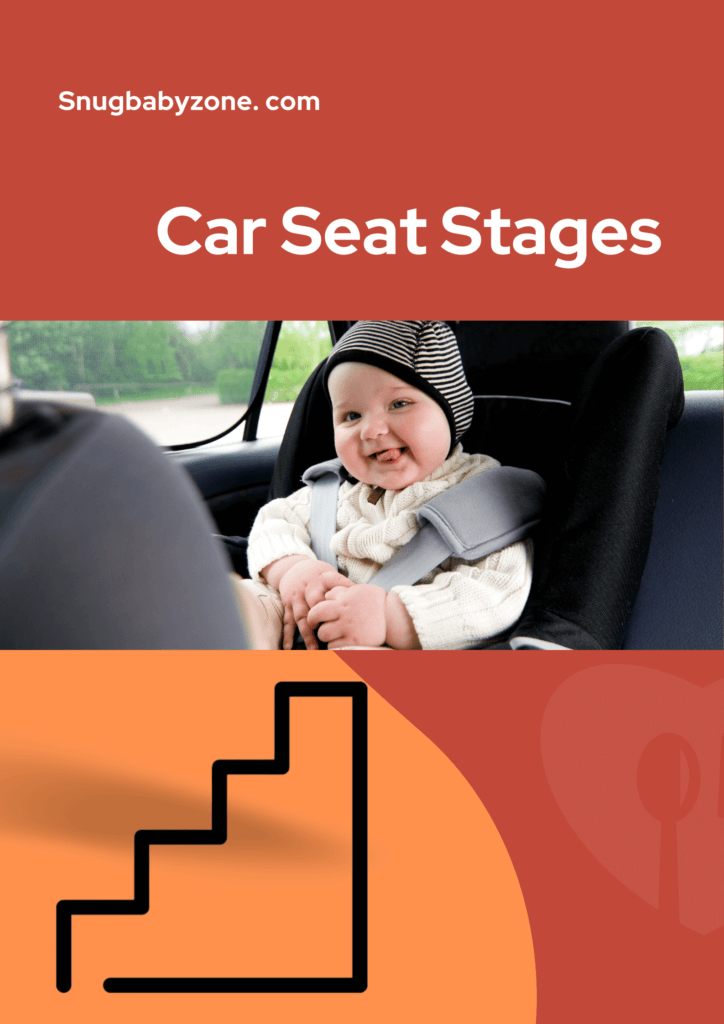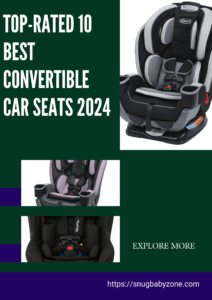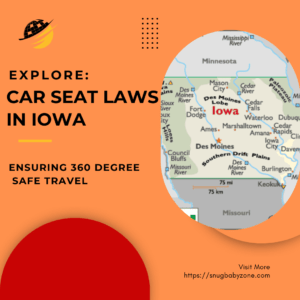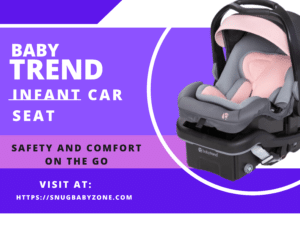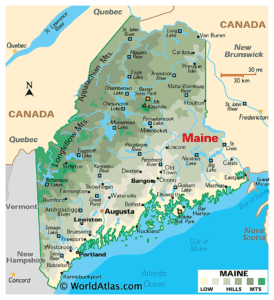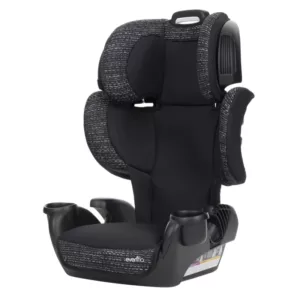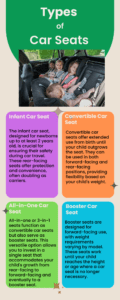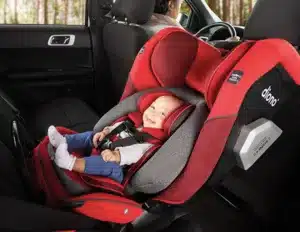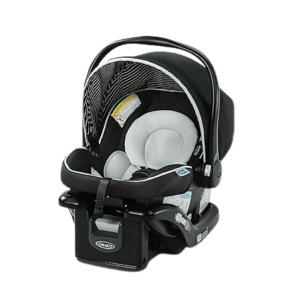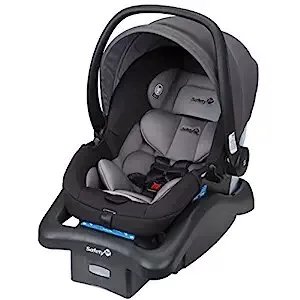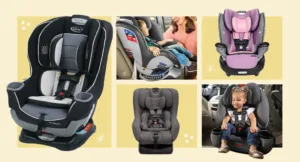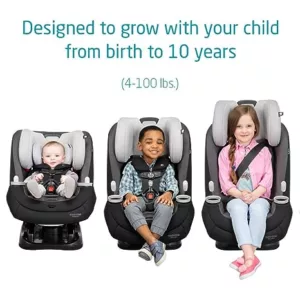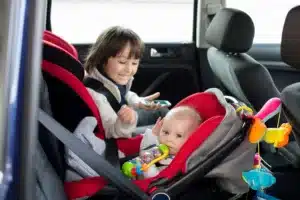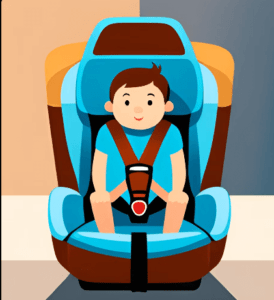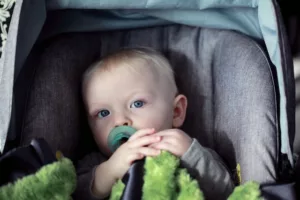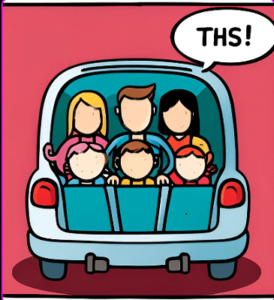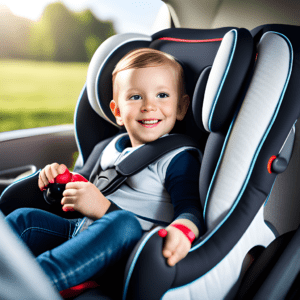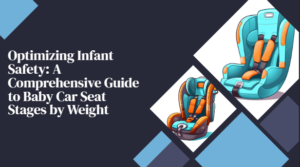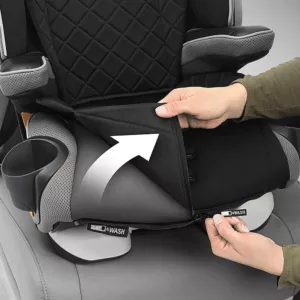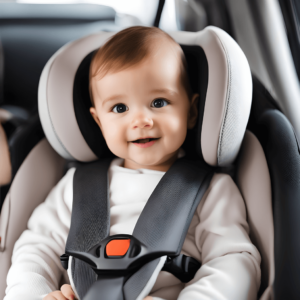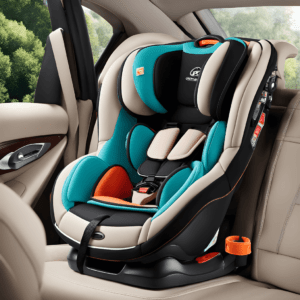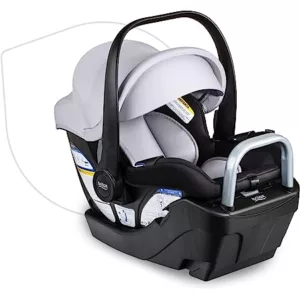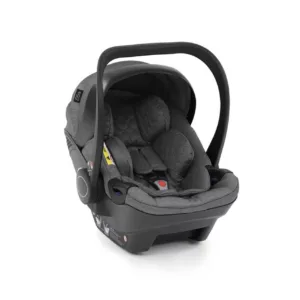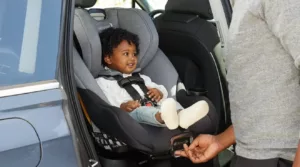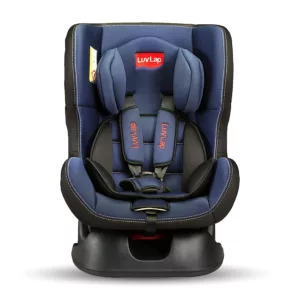Table of Contents
ToggleCar Seat Stages: What You Need to Know
Understanding the journey through Car Seat Stages is paramount regarding child passenger safety. These stages are designed to accommodate your child’s changing needs and growth, providing them with the best possible protection during car rides. There are three main Car Seat Stages, each serving a unique purpose:
Thank you for reading this post, don't forget to subscribe!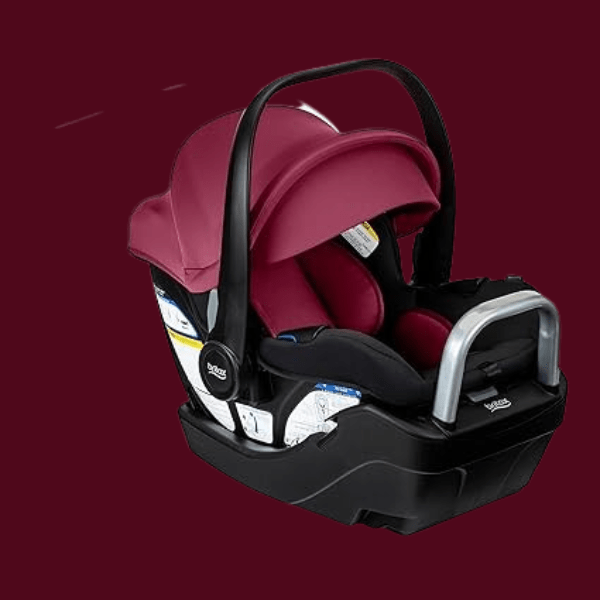
Stage 1: Rear-Facing Infant Car Seats
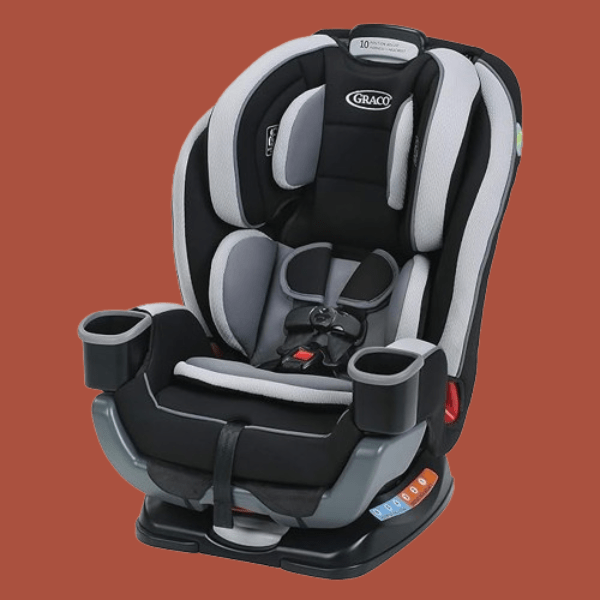
Stage 2: Forward-Facing Car Seats
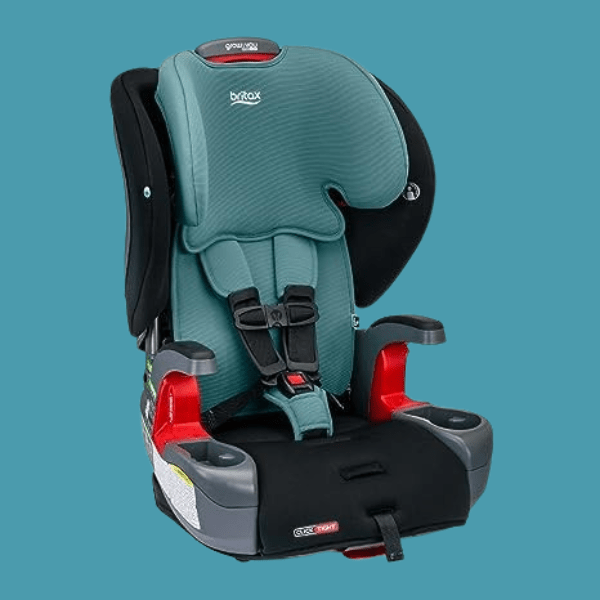
Stage 3: Booster Older baby Car Seats
Stage 1: Rear-Facing Infant Car Seats
Age and Weight Range:
Typically designed for newborns up to around two years old or until they reach the maximum weight range is 22 to 35 pounds and height limit is Up to 30.
Installation:
These seats are installed in the rear-facing position in the vehicle's back seat, providing optimal protection for infants in the event of a collision.
Safety Features:
They come equipped with a five-point harness system, energy-absorbing foam, and adjustable headrests to provide infants with excellent head and neck support.
Benefits:
Rear-facing infant car seats offer the best protection for babies, as they distribute crash forces evenly across the back, reducing the risk of injury to the neck and spine.

Warnings for Stage 1: Rear-Facing Infant Car Seats
• Avoid Using an Expired Seat: Do not use a rear-facing infant car seat if it expires. Car seats have a limited lifespan due to wear and tear, and using an expired seat may compromise safety.
• Bulky Clothing Caution: Be cautious about dressing your baby in bulky clothing while in the car seat. Thick layers can interfere with harness snugness and may not provide proper protection during a crash. Instead, use a blanket over the secured harness.
Tips for Stage 1: Rear-Facing Infant Car Seats
• Correct Angle Adjustment: Ensure the rear-facing car seat is installed at the correct recline angle. Many seats have built-in angle indicators or adjustable bases. Follow the manufacturer's instructions to achieve the right angle, typically around 45 degrees, to support your baby's head and neck.
• Avoid Aftermarket Accessories: It's important to refrain from using aftermarket accessories or add-ons, such as head positioners or strap covers, unless the car seat manufacturer approves them. These unapproved items can interfere with the car seat's safety features.
Stage 2: Forward-Facing Toddler Car Seats
Age and Weight Range
Designed for toddlers who have outgrown rear-facing seats but are not yet ready for booster seats, typically between the ages of 2 to 4 or Until they satisfy the criteria for height limit 30 to 40 inches and weight. limit 40 to 65 pounds.
Safety Features
They include a five-point harness system, side-impact protection, and adjustable recline positions to ensure a secure and comfortable fit for toddlers.
Installation
Forward-facing toddler seats are installed in the vehicle's back seat and secured using the vehicle's seat belts or the LATCH system.
Benefits
Forward-facing toddler car seats protect the child's upper body and head while allowing them to see outside and enjoy a more upright position

Warnings Stage 2: Forward-Facing Toddler Car Seats
• Premature Forward-Facing Transition: Avoid transitioning your child to a forward-facing seat too early. Ensure they meet the height and weight requirements specified by the car seat manufacturer before switching.
• Loose Harness Warning: Ensure that the harness straps are snug and secure. A loose harness can increase the risk of injury during a collision, so always check for a snug fit before driving.
Tips for Stage 2: Forward-Facing Toddler Car Seats
• Tighten the Harness Properly: When securing your child in a forward-facing seat, ensure the harness straps are snug and lie flat on their shoulders. There should be no slack. Check the harness tightness each time you secure your child.
• Use the Tether Strap: Most forward-facing car seats have a tether strap that attaches to an anchor point in the vehicle. Always use the tether strap as it helps prevent the car seat from moving forward during a collision, providing extra protection for your child.
Stage 3: Booster Seats
Age and Weight Range:
Typically suitable for children aged four and older who have outgrown toddler seats but are not yet tall enough to use the vehicle's seat belt without a booster. Height limit is 40 inches and taller while weight limit is 40 to 100 pounds.
Installation:
Booster seats raise the child's seating position, allowing the vehicle's seat belt to fit properly across their chest and lap. They can be secured using the vehicle's seat belt.
Safety Features:
Boosters do not have a harness but include a backless or high-back design. High-back boosters provide extra head and neck support.
Benefits:
Booster seats ensure that the seat belt fits correctly and safely, reducing the risk of injury in a crash. They use the vehicle's seat belt alone to bridge the gap between toddler seats.

Warnings for Stage 3: Booster Seats
• Premature Transition to Seat Belt: Do not transition your child to using the vehicle's seat belt without a booster seat until they meet the height and weight requirements. Prematurely using the seat belt alone can result in improper positioning and reduced safety.
• Backless Booster Age Consideration: If using a backless booster, ensure your child is mature enough to sit correctly without leaning or slouching. If they can't maintain proper posture, consider using a high-back booster with head support for additional safety.
Tips for Stage 3: Booster Seats
• Correct Angle Adjustment: Ensure the rear-facing car seat is installed at the correct recline angle. Many seats have built-in angle indicators or adjustable bases. Follow the manufacturer's instructions to achieve the right angle, typically around 45 degrees, to support your baby's head and neck.
• Avoid Aftermarket Accessories: It's important to refrain from using aftermarket accessories or add-ons, such as head positioners or strap covers, unless the car seat manufacturer approves them. These unapproved items can interfere with the car seat's safety features.
These three Car Seat Stages are crucial for ensuring the safety and comfort of children during car journeys. It’s essential to follow the manufacturer’s guidelines and local laws regarding car seat usage to provide the best protection for your child as they grow.
Car Seat Stages by Age, Weight and Height:
Understanding the age, weight, and height guidelines for each stage is crucial for ensuring the safety and comfort of your child during car journeys. Below is a summary of these guidelines in an easy-to-reference table, helping you make informed choices when selecting the appropriate car seat for your child’s needs.
Car Seat Stage | Age Range | Weight Range | Average Height Range |
Rear-Facing Infant Car Seats | Newborn to around two years | 22 to 35 pounds (10 to 15.9 kilograms) | Up to 30 inches (76 cm)
|
Forward-Facing Toddler Seats | Approximately 2 to 4 years | 40 to 65 pounds (18 to 29.5 kilograms) | 30 to 40 inches (76 to 102 cm)
|
Booster Seats | Typically, four and older | 40 to 100 pounds (18 to 45.4 kilograms). | 40 inches (102 cm) and taller |
These average weight and height ranges provide a better understanding of the typical growth patterns for children in each car seat stage. However, always refer to the specific guidelines the car seat manufacturer provides for precise recommendations.
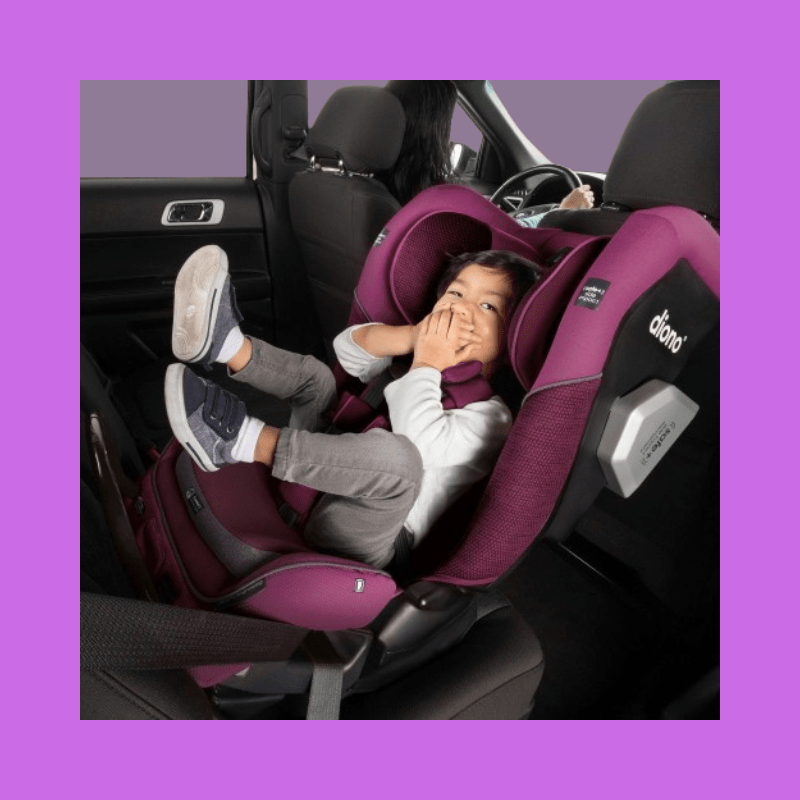
NHTSA Recommendations for Infants – When Can a Child Use Rear-Facing Car Seat?
The NHTSA recommends that infants use rear-facing car seats exclusively during their early years. It’s advised to keep infants in rear-facing car seats as long as possible, ideally up to the age of 2 or until they outgrow the height and weight limits specified by the car seat manufacturer. This alignment with NHTSA guidelines underscores the importance of prioritizing rear-facing car seats for infants to provide them with the highest level of protection during car journeys.
When Can a Child Use a Forward-Facing Car Seat?
One of the significant milestones in a child’s car seat journey is the transition from a rear-facing to a forward-facing position. However, making this switch at the right time is crucial to ensure your child’s safety. The specific age and criteria for this transition may vary by region and car seat manufacturer, but there are some general guidelines to consider.
- Weight and Height Requirements: Most car seat manufacturers design forward-facing seats for children with a certain weight and height. It’s common for these requirements to be around 40 pounds (18 kilograms) and 40 inches (102 centimeters). Always consult the instruction manual of your specific car seat to determine the manufacturer’s guidelines.
- Age: While weight and height are important factors, age also plays a role in transitioning to forward-facing seats. It’s generally recommended to keep a child in a rear-facing seat for as long as possible, ideally up to the age of 2 or beyond. Some experts suggest that rear-facing is the safest position for young children, as it provides better protection for their head, neck, and spinal protection in the case of a crash.
- Consider Local Laws: Be aware of your area’s child passenger safety laws. These laws may specify the age, weight, and height requirements for using forward-facing car seats. Always comply with these legal requirements to avoid any potential penalties.
- Car Seat Labels: Check the labels and instructions on your child’s car seat for specific guidance on when to switch to a forward-facing position. The car seat’s manufacturer will provide the most accurate information regarding its proper use.
- Child Readiness: Lastly, consider your child’s readiness. While they may meet the weight and height requirements, ensuring they are developmentally ready to transition is important. Some children may prefer the comfort and security of rear-facing seats for longer periods.
The timing for transitioning a child to a forward-facing car seat depends on a combination of factors, including weight, height, age, local laws, and the manufacturer’s guidelines. However, experts generally recommend keeping children in rear-facing seats for as long as possible, adhering to local laws, and following the specific instructions provided by the car seat manufacturer. Prioritizing safety is paramount in ensuring your child’s well-being during car journeys.
Final Verdict- Car Seat stages:
In conclusion, understanding the three vital Car Seat Stages is fundamental for ensuring the safety and comfort of your child during car journeys. These stages are meticulously designed to accommodate your child’s changing needs and growth, offering them the best possible protection during every ride.
From the initial Rear-Facing Infant Car Seats that provide excellent head and neck support for newborns to the Forward-Facing Toddler Car Seats that continue to prioritise your child’s safety and comfort, and finally, the Booster Seats that bridge the gap before they can use the vehicle’s seat belt alone – each stage plays a crucial role in keeping your child secure on the road.
Remember, it’s not just about the child’s age; their weight, height, and individual readiness determine when to transition between stages. Always adhere to the manufacturer’s guidelines and local laws, and prioritize safety to ensure a safe and happy journey for your little one. With the right knowledge and proper use of car seats, you can provide your child with the highest level of protection during every car ride, allowing you to enjoy worry-free journeys together.
Frequently Asked Questions about Car Seat Stages:
- When should I transition my child from a rear-facing infant car seat to a forward-facing toddler seat?
- Answer: The ideal time to transition your child from a rear-facing infant car seat to a forward-facing toddler seat is when they have reached the weight and height limits specified by the car seat manufacturer. Additionally, it’s generally recommended to keep them rear-facing for as long as possible, ideally up to the age of 2 or beyond, as it provides better protection for their head, neck, and spine in the event of a collision.
- What’s the importance of booster seats for older children?
Booster seats are crucial for older children who have outgrown toddler seats but are not yet tall enough to use the vehicle’s seat belt without assistance. These seats raise the child’s position, ensuring the seat belt fits correctly and safely across their chest and lap. Booster seats bridge the gap between toddler seats and the vehicle’s seat belt, reducing the risk of injury in a crash.
- Can I use aftermarket accessories with my child’s car seat?
It’s important to refrain from using aftermarket accessories or add-ons, such as head positioners or strap covers, unless they are specifically approved by the car seat manufacturer. These unapproved items can interfere with the car seat’s safety features and compromise its protection. Always follow the manufacturer’s guidelines and use only approved accessories if necessary.
- How can I ensure my child’s car seat is installed correctly?
Ensuring correct installation is crucial for the effectiveness of a car seat. To do so, follow these steps:
- Carefully review the car seat manufacturer’s manual.
- Use the vehicle’s seat belts or LATCH system as directed.
- Check that the car seat is securely installed with minimal movement.
- Verify that the harness or seat belt is snug and properly adjusted for your child’s size.
- Follow the manufacturer’s guidelines for the correct recline angle.
- If unsure, consider having a certified Child Passenger Safety Technician (CPST) inspect and help with the installation to ensure it meets safety standards. Many communities offer CPST services for free or at a low cost.
